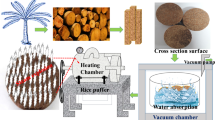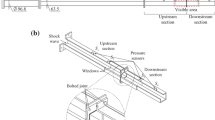Summary
The effect of supersonic waves on the capillary penetration of liquids into wood was found to be positive or negative depending upon a number of factors. The penetration of non-polar compounds like paraffins and aromatic hydrocarbons was not improved by using supersonic waves. The effect of supersonic waves, however, became positive by introducing one or several hydrophilic groups into straight hydrocarbon chains.
Diluting hydrocarbons containing hydrophilic groups with non-polar solvents reduced the positive effect of supersonic waves until it became negative below a certain concentration. Polyfunctional alcohols exhibited an optimum effect at certain concentrations when diluted with water. These concentrations correspond to alcohol-water blends of maximum affinity to the surface of wood.
Supersonic waves improved the capillary penetration of water when the surface tension was reduced by using surface active agents.
In fields were the rapid and thorough impregnation of wood by various liquids is important, supersonic waves can under certain conditions aid this process and be of practical use.
Similar content being viewed by others
Author information
Authors and Affiliations
Rights and permissions
About this article
Cite this article
Borgin, K., Corbett, K. Improvement of capillary penetration of liquids into wood by use of supersonic waves. Wood Sci.Technol. 4, 189–194 (1970). https://doi.org/10.1007/BF00571853
Received:
Issue Date:
DOI: https://doi.org/10.1007/BF00571853




